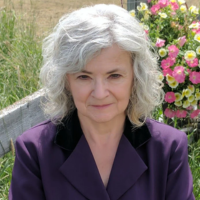Editor’s Note: As Canada marks the National Day for Truth and Reconciliation on September 30, 2025, we invited Doris Jeanne MacKinnon, Director of Education at NACC, educator, researcher, and author on Métis history and culture, to share her reflections. Her piece offers a thoughtful perspective on what reconciliation means to her as a non-Indigenous scholar and reminds us that this journey begins with learning, respect, and valuing both Indigenous and Western ways of knowing.
Reflection Preview
In this reflection, Doris Jeanne explores what Truth and Reconciliation means to her as a non-Indigenous scholar and educator. She shares her personal journey of learning, shaped by both what she was taught and what she was not, and how this led her to study Indigenous histories and build meaningful relationships with Indigenous communities. Through her words, she reminds readers that reconciliation is a shared responsibility, rooted in mutual respect, understanding, and the recognition that both Indigenous and Western ways of knowing hold equal value.
In Her Words...
As I reflect on what Truth and Reconciliation means to me, my first thought is that, as a non-Indigenous person, it may mean something very different than it does to an Indigenous person. Indeed, it may mean something different to other non-Indigenous people. Thus, the journey for each Canadian in understanding and engaging with Truth and Reconciliation is unique to them.
My journey of truth and reconciliation started without a conscious awareness that I had actually embarked on that journey. In 2004, when I was accepted into a graduate program with a focus on Canadian History, I was expected to identify an area of specialization. I was drawn to Indigenous studies, without really knowing why at the time. Many of my fellow students assumed that, naturally, I must be Indigenous, because why else would I want to learn more about Canada’s Indigenous peoples?
One of the inspirations for my chosen focus of studies was recollection of my time in primary education. However, I was not inspired because of the learning that I was exposed to about Indigenous peoples. Rather, I was inspired because of the learning that I was not exposed to. Although I attended high school a short 15-minute drive from one of the last residential schools to close, I had no knowledge of the existence of that school, no knowledge of the experiences of the students who had been made to attend that school, often without the permission of their parents. Indeed, I did not learn anything about this school and its students until I returned to post-secondary studies as a mature student many years later. Despite the fact that I had attended high school in the first Métis settlement in Canada, and despite the fact that there were five First Nations communities and one Métis community in the surrounding area, I did not have the opportunity to engage in any structured learning about the history and culture of Indigenous peoples during my K-12 education. This is not dissimilar to the experience of many Canadians.
The learning that, unfortunately, informed my own identity and history in my formative years was the inherent racist beliefs and ideology that permeated much of Canadian society until quite recently. In my journey as a student of Indigenous studies as an adult learner, I sought to understand the reason for the racism that has been so often directed at Indigenous peoples. I came to believe that the journey of truth and reconciliation is necessarily an individual journey in which we have a uniquely personal responsibility to become informed about our collective history.
Not only are we called to reflect on our collective history, but I believe that we are called to take action in our own unique ways. For me, that meant immersing myself in Indigenous studies; it meant forming relationships with Indigenous peoples; it meant sharing the stories of Indigenous peoples whose families wished to have those stories shared. It meant that I had the honour of learning and, in return, offering opportunities to others to learn of the incredible resilience and richness of the culture, identity, and humanity of Indigenous peoples of Canada. It meant that I had embarked on a lifelong journey of learning, a personal journey of truth and reconciliation.
When the Canadian government established the Truth and Reconciliation Commission with a mandate to listen to the stories of residential school survivors, an invitation to embark on a personal journey of truth and reconciliation was offered to every Canadian. As the Commission traversed the country, countless Canadians accepted the invitation to listen to the stories, to extend their respect, and to offer their support to the survivors of the residential school system. In extending this respect and support, they embarked on that personal journey of truth and reconciliation. They accepted the hand of friendship extended by the Chair of the Truth and Reconciliation Commission, the Honourable Murray Sinclair, whose sentiment was that it was not for Indigenous peoples to teach non-Indigenous people how to reconcile. Rather, Sinclair noted that “it is for us to recognize that we have been victimized for so long that we have forgotten how to be who we were meant to be. Reconciliation is part of what we have to do, but it’s for ourselves… reconciliation is about mutual respect.” [1]
Reconciliation is about each of us; it is about mutual respect. It is about learning each other’s history, culture, and worldviews. It is about assuming a posture of cultural humility as we acknowledge that Indigenous worldviews matter, not more than Western worldviews matter, but that they matter equally. Some years ago, Mi’kmaq Elder Albert Marshall introduced us to Two-Eyed Seeing, a concept that brings together Indigenous and Western worldviews to consider issues from multiple viewpoints: “to see from one eye with the strengths of Indigenous ways of knowing, and to see from the other eye with the strengths of Western ways of knowing, and to use both of these eyes together.” [2]
As the National Association of Career Colleges (NACC) pauses to reflect on the journey that has led us to a recognition of the importance of Truth and Reconciliation Day, we invite our members to join us in engaging in our collective history. We invite our members to join us in recognizing the strengths of Indigenous ways of knowing. We invite our members to weave together wisdoms from both the Indigenous eyes and the Western eyes.
[1] CBC Radio. (2024, November 9). What reconciliation meant for Murray Sinclair. YouTube. CBC News
[2] Continuing Education and Professional Development. (n.d.). An Introduction to Two-Eyed Seeing. Northern Ontario School of Medicine. Continuing Education

About the Author
Doris Jeanne MacKinnon is an educator, researcher, and author known for her work on Métis history and culture. With over 15 years of experience in post-secondary education, she has written extensively about Indigenous identity, resilience, and the importance of decolonizing learning spaces. You can learn more about her works here: https://dorisjeannemackinnon.ca/readers

